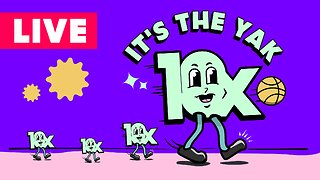Mastering Online Trading: Bollinger Bands & RSI Uncovered
Mastering online trading using technical indicators like Bollinger Bands and the Relative Strength Index (RSI) can be a powerful tool for traders looking to make informed decisions in the financial markets. Here's an overview of these two indicators and how you can use them effectively:
**1. Bollinger Bands:**
Bollinger Bands are a popular volatility indicator created by John Bollinger. They consist of three lines:
- **Middle Band (MB):** This is typically a 20-period simple moving average (SMA).
- **Upper Band (UB):** It's the MB plus two times the 20-period standard deviation.
- **Lower Band (LB):** It's the MB minus two times the 20-period standard deviation.
Bollinger Bands are used to identify potential price reversals, overbought or oversold conditions, and periods of low or high volatility.
**How to use Bollinger Bands:**
- When prices touch or exceed the upper band, it may indicate that the market is overbought, and a reversal could be imminent.
- When prices touch or fall below the lower band, it may indicate that the market is oversold, and a reversal could be imminent.
- Bollinger Bands can also help identify periods of low volatility when the bands contract and high volatility when they expand.
**2. Relative Strength Index (RSI):**
The RSI is a momentum oscillator developed by J. Welles Wilder. It measures the speed and change of price movements and is expressed as a value between 0 and 100. RSI is typically used on a 14-period setting.
**How to use RSI:**
- When the RSI is above 70, it's often considered overbought, which could suggest a potential downward price correction.
- When the RSI is below 30, it's often considered oversold, which could suggest a potential upward price correction.
- Divergence between RSI and price movements can also signal potential reversals.
**Tips for mastering online trading with Bollinger Bands and RSI:**
1. **Combine the Indicators:** Using both Bollinger Bands and RSI together can provide more robust trading signals. For example, when RSI indicates overbought or oversold conditions and Bollinger Bands confirm with price touching the upper or lower band, it can increase your confidence in a trade.
2. **Backtesting:** Test your trading strategy using historical data to see how it would have performed in the past. This can help you identify the strengths and weaknesses of your approach.
3. **Risk Management:** Always use proper risk management techniques, like setting stop-loss orders and position sizing, to protect your capital.
4. **Stay Informed:** Keep an eye on market news and events that can influence the instruments you're trading. Economic data releases, geopolitical events, and earnings reports can impact prices.
5. **Continuous Learning:** The financial markets are dynamic. Stay updated on the latest trading strategies and market developments to adapt to changing conditions.
6. **Practice Patience:** Avoid impulsive decisions and stick to your trading plan. Emotional trading can lead to losses.
Remember that no trading strategy is foolproof, and there are risks involved in online trading. It's important to develop your strategy, backtest it thoroughly, and consider seeking advice from financial professionals or mentors if you are new to trading. Always be prepared for the possibility of losing capital, and only trade with money you can afford to lose.
-
 LIVE
LIVE
Tucker Carlson
27 minutes agoNeil Oliver: How Banks Took Over Empires, and the Truth About WWII, Brexit, & COVID
6,001 watching -
 LIVE
LIVE
Barstool Yak
50 minutes agoThe Yak with Big Cat & Co. Presented by Rhoback | The Yak 6-20-24
429 watching -
 LIVE
LIVE
Ben Shapiro
1 hour agoEp. 1988 - Bring BACK The Ten Commandments in Schools
1,998 watching -
 1:16:49
1:16:49
Russell Brand
4 hours agoEXPOSED: Pentagon Ran Anti-Vax Campaign In Asia While CENSORING YOU! You Won’t F*cking Believe This!
54.8K84 -
 LIVE
LIVE
The Charlie Kirk Show
1 hour agoWhat Polls To Trust? + False Flags? | Boyle, Beattie | 6.20.24
7,156 watching -
 LIVE
LIVE
TheAlecLaceShow
2 hours agoGuests: Charlie Kirk | Valentina Gomez | Ten Commandments in the Classroom | The Alec Lace Show
245 watching -
 LIVE
LIVE
LumpyPotatoX2
4 hours agoFortnite: It's Thursday - #RumbleTakeover
360 watching -
 58:34
58:34
The Dan Bongino Show
4 hours agoF Around And Find Out (Ep. 2775) - 06/20/2024
279K1.15K -
 48:05
48:05
Dave Portnoy
2 hours agoThe Unnamed Show With Dave Portnoy, Kirk Minihane, Ryan Whitney - Ep. 19
10.7K3 -
 1:24:21
1:24:21
Benny Johnson
2 hours agoTop Democrats PANIC as New Polls Show DOOM For Biden | Trump SURGES 📈 | 'Time To Replace Joe?'
26.9K41